David Fenohr had never worked as a biologist in the field when he came across his first terrapin, a hatchling headfirst in the mud on an island in the Chesapeake Bay.
Fenohr had signed up to spend the summer with Professor Willem Roosenburg(opens in a new window) on his multi-year project to help Maryland's diamondback terrapins make a comeback—thanks to an island that gives the turtles a haven free from most nest predators.
Each summer, Roosenburg recruits a team of graduate and undergraduate students to live in a house on the east side of the Chesapeake Bay and spend Monday through Friday boating out to Poplar Island(opens in a new window) to find, measure, and tag the terrapins.
"The first time I picked up a turtle I was 'rolling rack,' which was basically combing the tall marsh grass on the banks of one of the small channels in one of the cells on Poplar Island. I pulled the grass aside, and there was a little hatching from an over-wintering nest stuck head first in the mud," said Fenohr, a senior a wildlife biology and conservation science major(opens in a new window) with a minor in plant biology(opens in a new window) who plans to graduate this fall from the College of Arts and Sciences.
Roosenburg has a field manual and extensive training for students detailing what to do in every terrapin encounter, so Fenohr proceeded to process the tiny turtle and then release him. Measurements and tracking are key to Roosenburg's assessment of the terrapin population.
Both Poplar Island and diamondback terrapins are making a comeback, as dredged material is being used to rebuild the island once nearly decimated by erosion. While people have abandoned the island, Maryland has moved to restore the valuable habitat for ospreys, herons, eagles, terrapins, and other wildlife.
“Because the habitat available for terrapins on Poplar Island is expanding and there are no nest predators, the terrapin population is increasing and therefore serving as a model for turtle conservation," Roosenburg, professor of Biological Sciences in the College of Arts and Sciences, said.
Roosenburg started working with terrapins in 1986 and began the Chesapeake Bay program in 2002. One of his monitoring points involves tracking the terrapins' reproduction, which means finding nests and, if the nest has been found with 24 hours of being laid, counting and measuring the eggs.
"The first time I found a nest by myself I was walking on the Center Dike with Dr. Roosenburg,” Fenohr said. “I spotted a section of dirt that was disturbed in the typical crescent moon shape with claw marks from the mother turtle burying the eggs. It was an exciting experience because Dr. Roosenburg had just instructed me on what to look for, and then shortly after I discovered my first one of the summer. I had gone out nesting once or twice before but had come back empty-handed, so this was my 'ah-ha' moment where I felt confident in my abilities to search for terrapin nests."
While helping to save the turtles is a noble endeavor, it's also a physically demanding one. Summers in Maryland are hot and humid, but long sleeves, long pants, and stout shoes are required, along with a lot of sunscreen. But Roosenburg noted that everyone ends the summer with a tan and a boatload of memories about their summer on the Chesapeake Bay despite the demanding work.
"The most challenging aspect of the summer had to be setting up the fyke nets in the cells," Fenohr added. "I tackled this task each week, and for the most part it was relatively simple and went smoothly, although there were a few Mondays when the wind was so strong that it would push the rowboat back considerably, which made it difficult to hammer the stakes that hold the nests into the muddy substrate of the channels."
This summer was Fenohr's first field experience working with wildlife, but he said it won't be his last.
"My favorite memories of the summer had to be the days when we had 60+ turtles that we had to process. This would take a few hours, but it offered many opportunities to handle and study the turtles we were on the island for. This also helped me cement the idea that I wanted to continue with fieldwork post-grad. I was also unsure about whether or not I wanted to pursue graduate school, and this opportunity made me realize that I want to continue my education as well," he said.
Additional students joining Roosenburg for the summer experience were biological sciences graduate students Kelsey Krumm and David Cole and senior wildlife and conservation biology majors Molly Haugen, Kendall Kuck, Trent Langenkamp, and Ashlynn Canode.

Wildlife biology students put conservation into practice with Chesapeake Bay terrapins

Graduate Student David Cole has participated in Terrapins summer research program with Dr Roosenberg for three consecutive summers, affording him the privileged position of helmsman on the crew.

The research team uses a combination of nets and traps to track turtle populations on Poplar Island.

Poplar Island remains an active large scale construction site. Students are taught safety procedures upon arrival and must adhere to a strict dress code while on the island.

Students look for nesting sites en route to a a turtle collection site on Poplar Island.
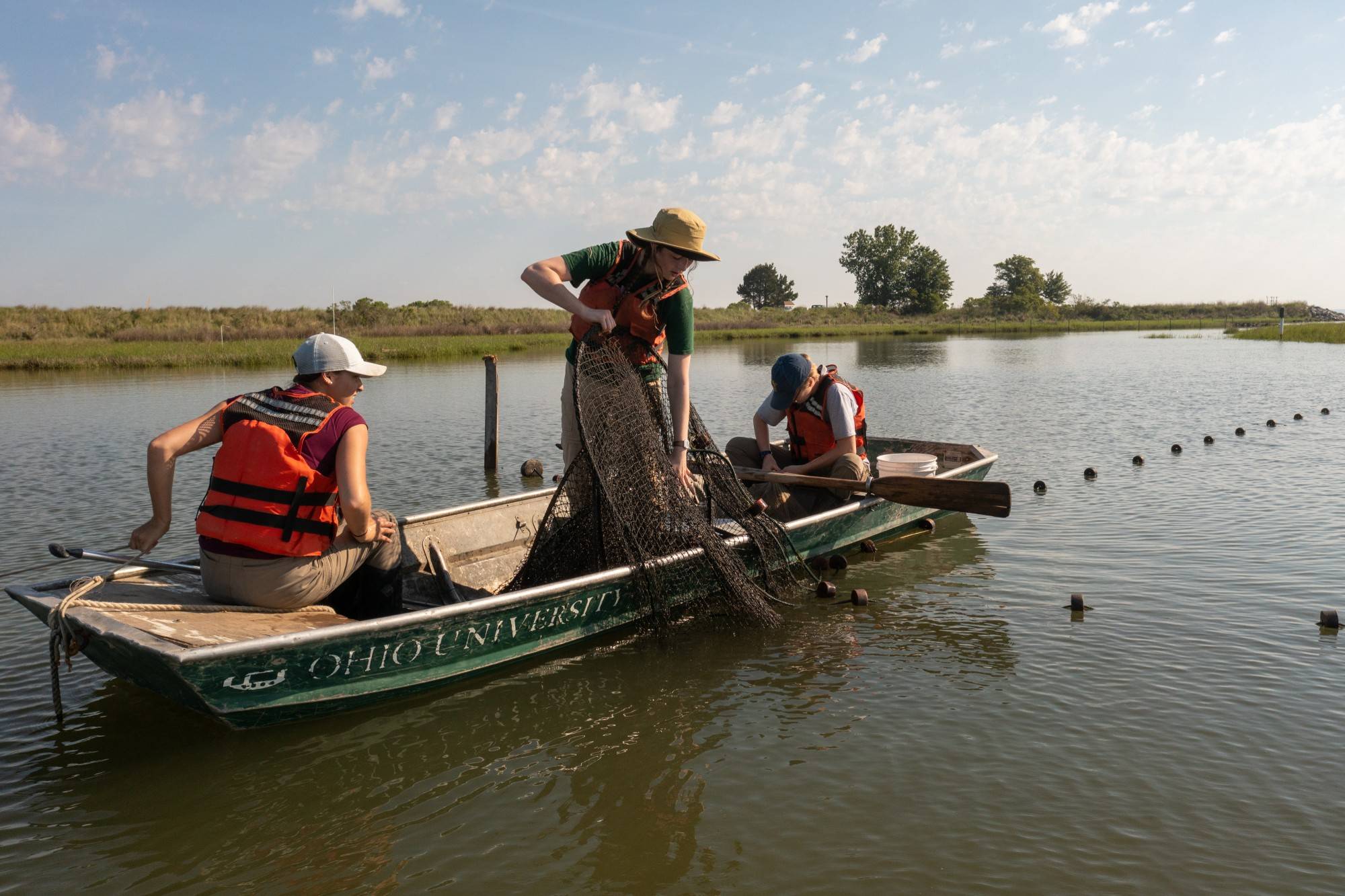
Undergraduate student Molly Haugen pulls a fyke net full of turtles onto a boat on Poplar Island.
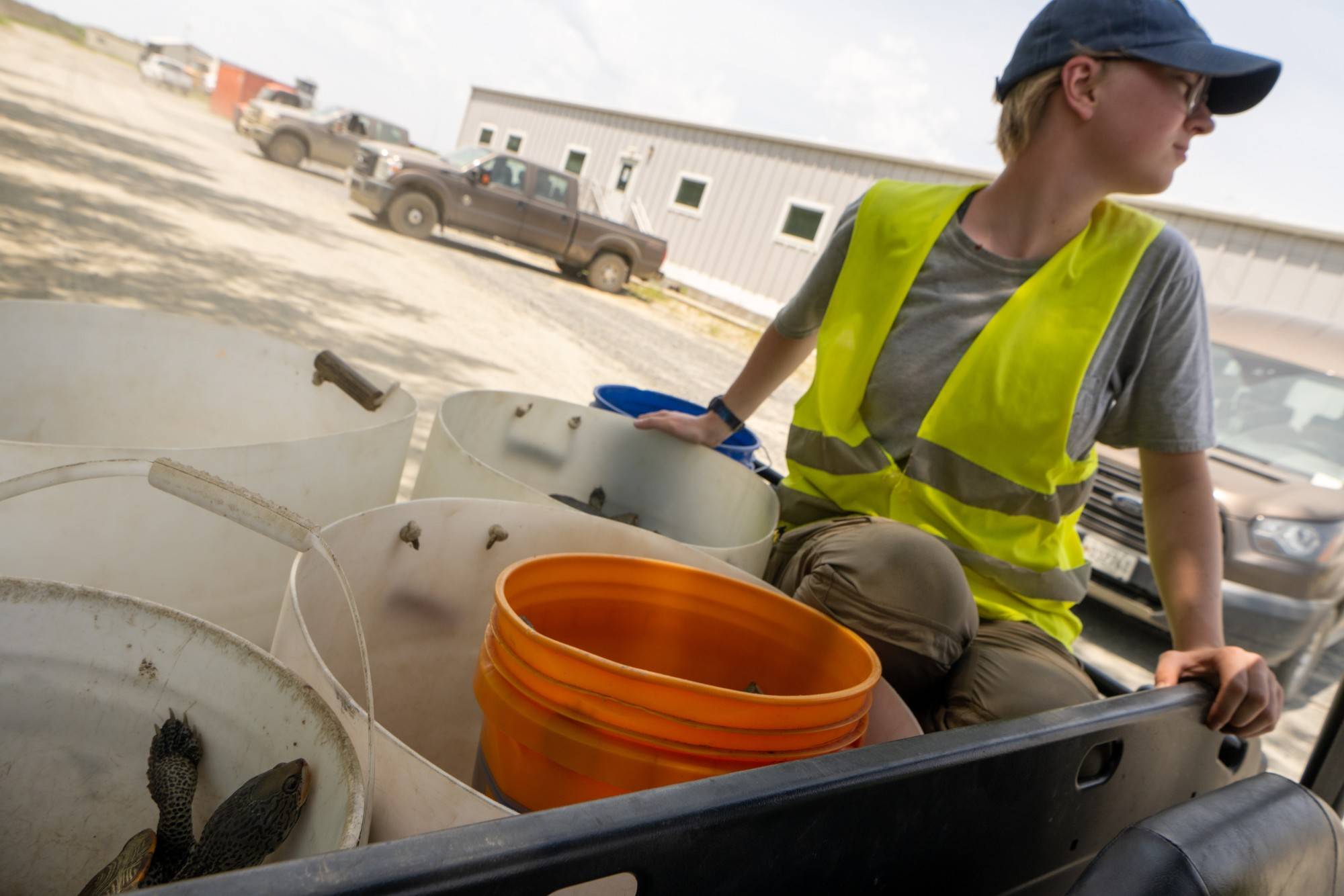
Undergraduate student Kendall Kuck watches over recently collected turtles in transit.

Turtles wait to be returned to the bay after being measured and tagged.

Five undergraduate students and two graduate students collaborate to meticulously collect and record turtle data in a shack on Poplar Island.
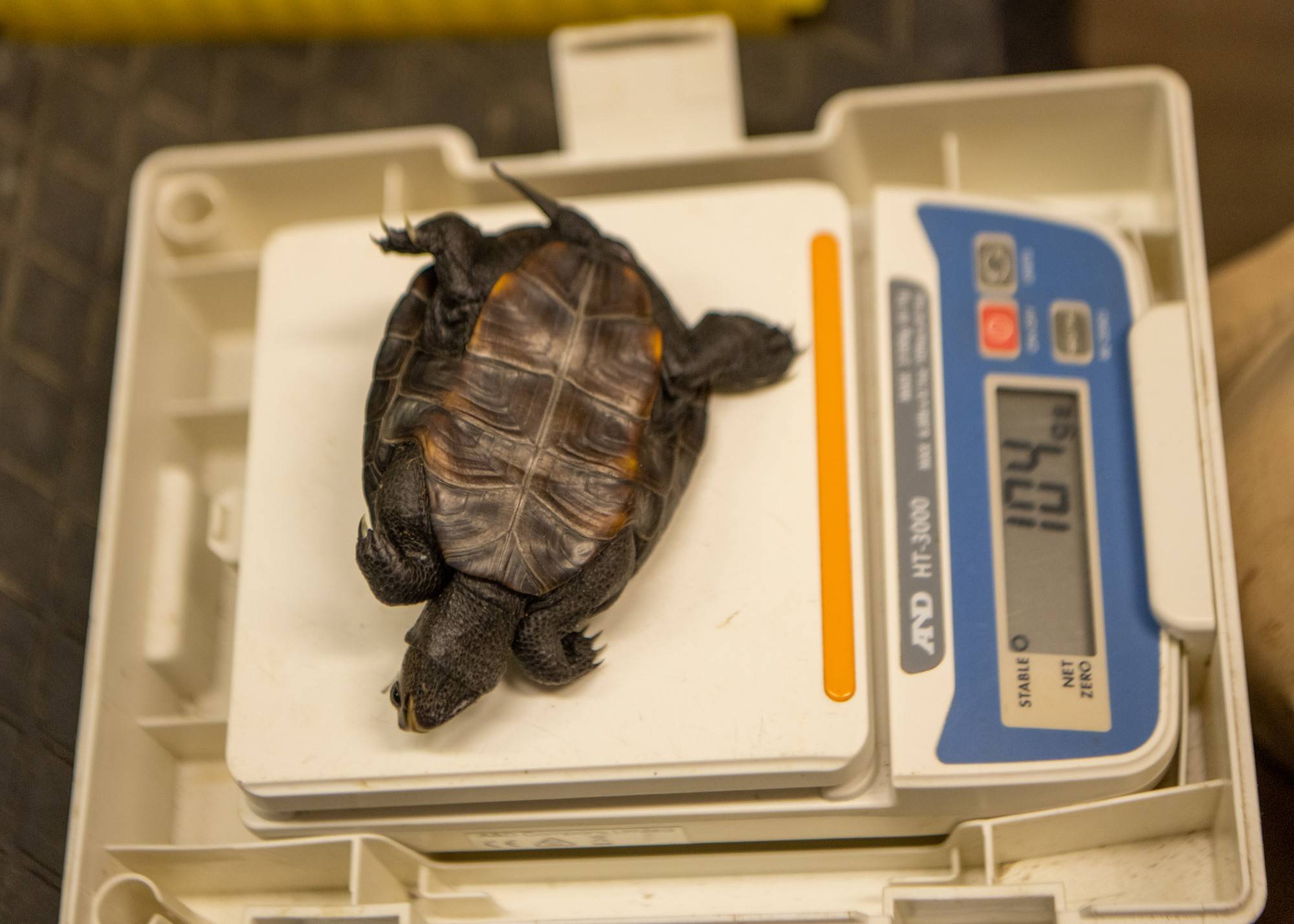
Each turtle that is collected is weighed and measured and tagged.

Graduate student David Cole collects prepares to collect DNA samples from the captured turtles.
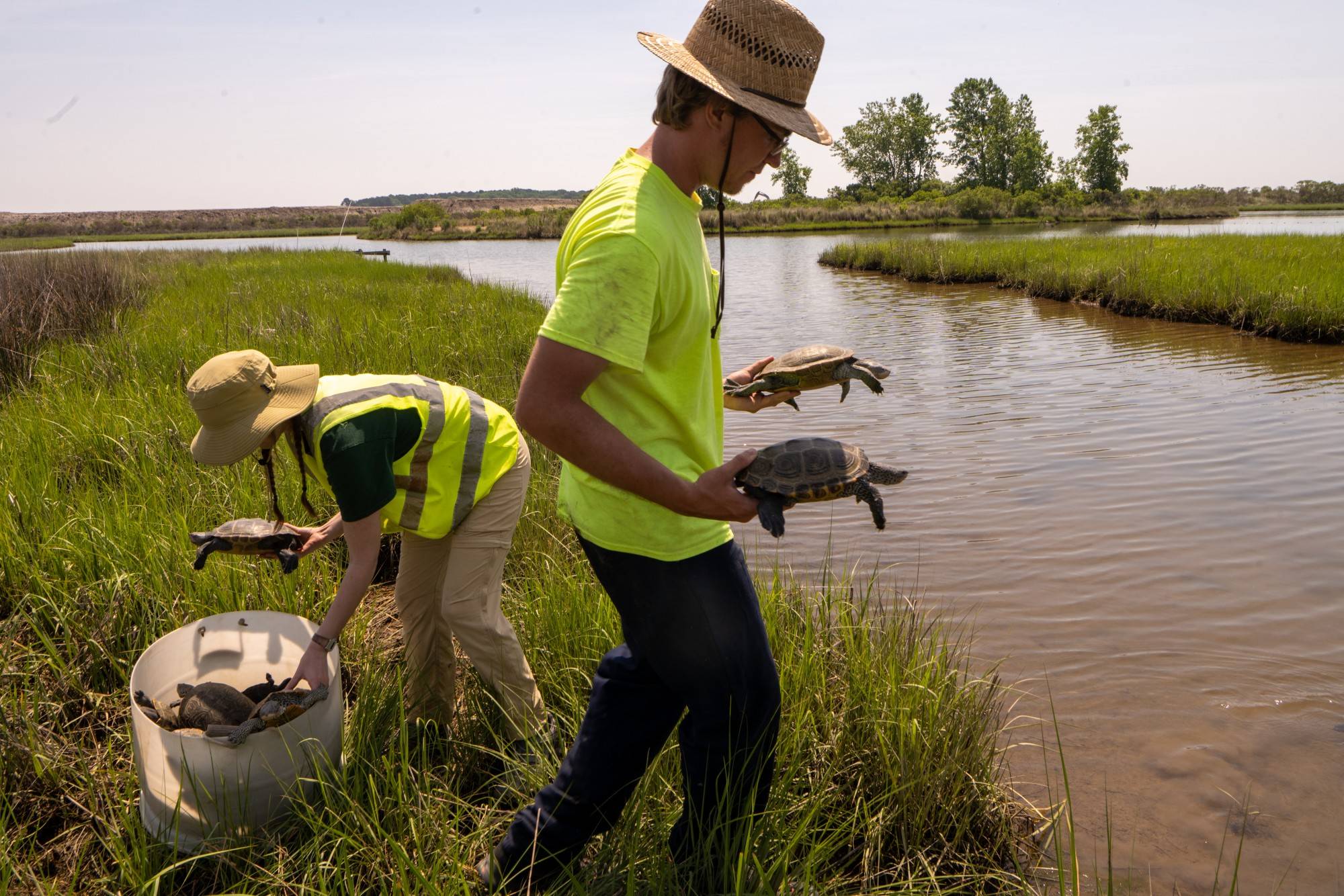
Trent Langancamp (Right) and Molly Haugen return the turtles to where they were collected after recording their measurements and tagging them for potential recapture.

The crew learn to search for turtle nests on the shore of poplar island.
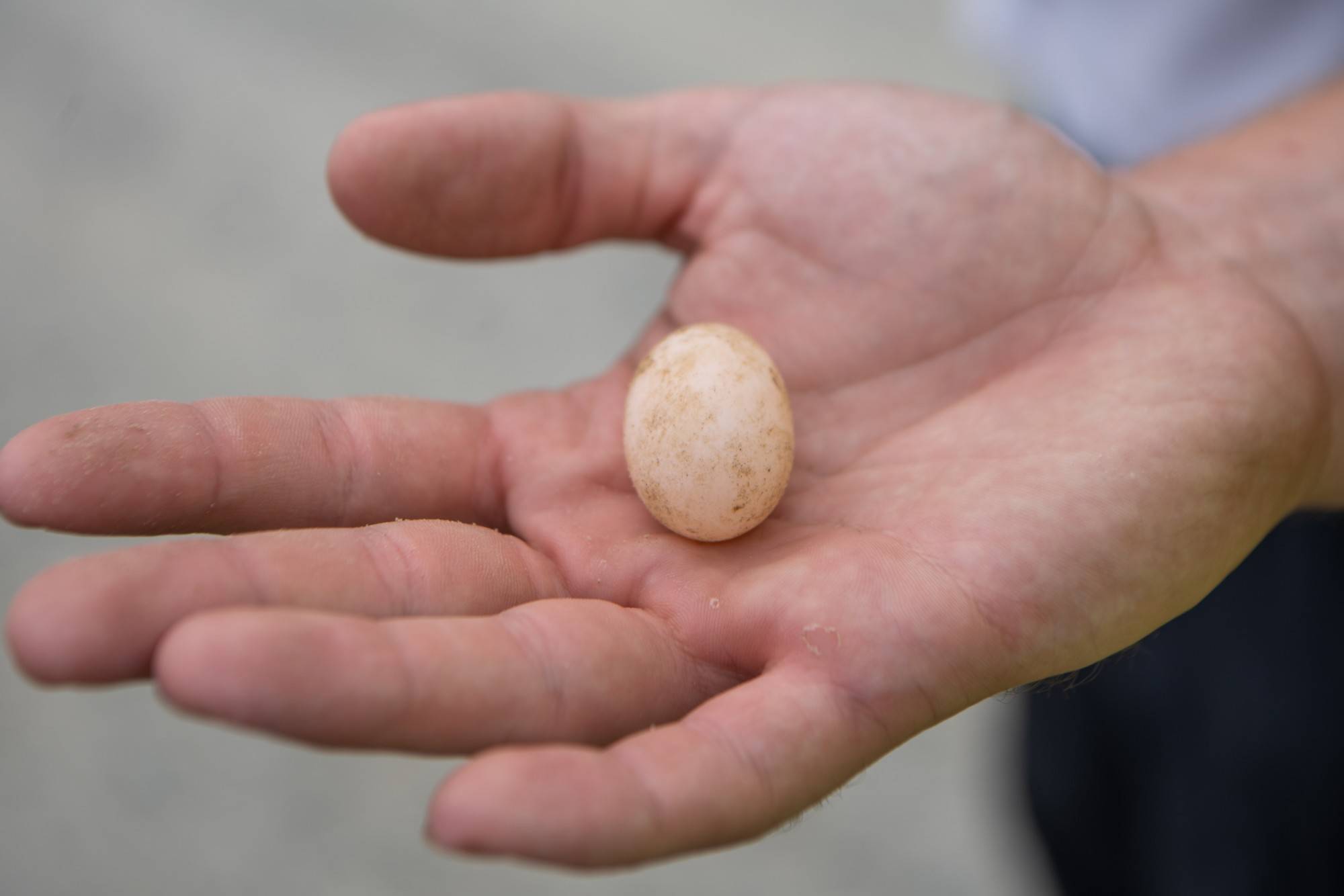
A student holds a turtle egg in their handle. Turtle eggs are counted and weighed and returned a nest, which researchers mark and fortify against predators. Turtle nests are occasionally relocated if they are found on a road or in another area that would be considered dangerous to the baby turtles.

Graduate student Kelsey Krumm marks a turtle nest with a flag.

The crew makes it's way back to the vehicle after a long afternoon of searching for turtle nests in the sun.

Dr. Willem Roosenberg points to the very subtle markings in the sand that helped him identify the site of a turtle nest.

Dr. Willem Roosenberg looks for turtle nests on Poplar Island.

Senior Environmental Specialist Kristina Motley directs local grade school students on Poplar Island. Motley is collaborating with Dr. Roosenberg's team in an environmental education program called TERP (Terrapin Education and Research Partnership).

TERP (Terrapin Education and Research Partnership) schools raise turtles collected by Roosenberg's team and release them back on Poplar where they were born.

Dr. Roosenberg photographs a turtle that was recaptured several years after being release by K- 12 students. Roosenberg shares the photos with the teachers and students via his lab's Facebook page.

The turtles raised in classrooms grow to the size of 2-3 year old wild juvenile terrapins in just nine months under the care of K-12 students. Roosenberg and his students study the long term impacts of this on the turtle populations on Poplar Island.

Undergraduate student Kendall Kuck rests her head for a moment after a long days work on the island.

Students relax before dinner after a long day's work.

Dr. Willem Roosenberg prepares snakehead fish for dinner at the dock of his home. The fish was caught in a turtle trap on Poplar Island but research protocols prevent the team from returning the fish to the bay because it is an invasive species.

Students enjoy fresh caught snakehead fish family style at Roosenberg's home.

